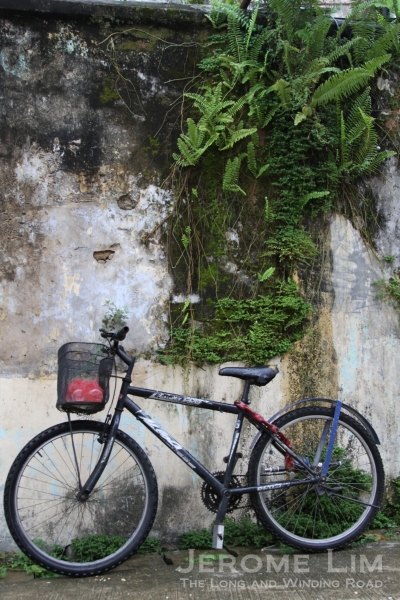I had the privilege of participating in a Ramadan trail at the Sultan’s Mosque or Masjid Sultan recently during which I was able to not just learn more about Islam, but also appreciate the observance of Ramadan and the significance of the practices involved a lot better. Islam I guess for me is somthing that I have understood only on the surface, having lived and worked amongst people of the faith all my life, but nothing more, and the short but informative programme at Singapore’s main mosque and one that traces its history to the early days of modern Singapore.

The Sultan's Mosque lighted up during Ramadan. The mosque traces its history to the early days of modern Singapore.
Ramadan as most of us in Singapore know, is a month during which Muslims observe a strict fast or Puasa from sunrise to sunset, an observance that culminates in the celebration of what is known locally as Hari Raya Puasa or Eid-ul-Fitr. I was to learn that the month is a lot more than just the observation of a fast, but a special month, the significance of which is that Ramandan is the month during which the Angel Gabriel revealed the Holy Qur’an to the Prophet Muhammed. Besides the fast, the month is also one of repentance, increased prayer, and increased charity for Muslims, and a month which Muslims believe every good and beneficial action is spiritually multiplied.

Ramadan is a special month in the Islamic calendar during which the Angel Gabriel revealed the Holy Qur'an to the Prophet Muhammed. Besides the observation of a fast, the month is also one of reflection, repentance, increased prayer, and increased charity for Muslims.
For Muslims, the motivation for fasting, is to attain Taqwa or “God consciousness“ through self-discipline, the word “Taqwa” is in Arabic and comes from the root word “wiqaya” which means prevention or protection. Fasting brings with it spiritual benefits and helps Muslims to be drawn closer to God through the increased recitation and reflection of the Qur’an and additional prayers, aiding with the increase of iman (faith) and ihsan (sincerity and righteousness) as well as humility and in the purification of the heart and soul. And it is in the practice of Ramadan and fasting that a believer is trained to act with charity, kindness, generosity, patience and forgiveness. One of the beautiful things about Ramadan that was brought to attention is that it is in fasting that a person experiences some of the hardships of the less fortunate in the world, those especially in the context of Singapore where food is in abundance, we often forget.

A lamp in the Masjid Sultan.

The main prayer hall of the Masjid Sultan.
Fasting for a Muslim begins at the break of dawn and ends at sunset and depending on where it is practiced in the world, can vary from 12 to 17 hours. It is not just food that one denies oneself in the observation of a fast, but also from drink and intimacy during fasting hours, and from blameworthy thoughts and acts at all times. Fasting is applicable to all Muslims with the exception of children, unhealthy adults (mentally or physically), adults travelling long distances, and women who are menstruating, in post-childbirth care, pregnant or breast-feeding.

Islam is about a relationship with God and one of peace through surrender to the will of God.
A typical day during Ramadan for a Muslim begins before dawn with the Sahoor, during which one has a meal and says the first prayer of the day. The breaking of the fast Iftar is at sunset and coincides with the fourth daily prayer (a Muslim says a minimum of five prayers daily). Other activities after the Iftar, includes Ziarat – social gatherings during which visits are made to relatives, food is shared with neighbours, friends, and the poor; and also the Tarawih (optional Prayers in early night), Qiraat; the reading of the Qur’ãn during free time; Qiyam (optional late-night prayers during the last 10 days).

Ramadan is an observance that revolves around prayer and fasting.
The trail, which is held during Ramadan every year, also offers the participant an opportunity to participate in the breaking of fast, during which food is eaten from a common plate using the hands, a practice that symbolises brotherhood, and is run by a team of docents at the mosque, one of whom, Brother Ibrahim or Jason, who hails from the state of Indiana in the U.S. was kind enough to share the information contained in this post with me. Besides Ramadan trails, the mosque also allows visits from tourists and members of the public who may enter the mosque daily from 10 am to Noon and from 2 pm to 4 pm (except on Friday afternoons) and docents like Jason would be on hand to take questions, provide guidance and share a little history of the mosque. More information on the Sultan’s Mosque is also available at the Masjid Sultan’s website.

Jason Wilson whose Muslim name is Ibrahim is a docent at the mosque and guides visitors on mosque tours and Ramadan trails.



 9.13 pm 29 April 2013, Chonburi City, Thailand
9.13 pm 29 April 2013, Chonburi City, Thailand


























































































































